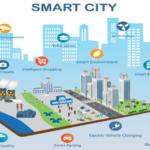The Role of Telecommunications in the Internet of Things (IoT)
- By -Mash
- Posted on
- Posted in Telecommunications
The Internet of Things (IoT) represents a transformative shift in how devices and systems communicate and interact. By embedding sensors, software, and connectivity into everyday objects, IoT creates a network of interconnected devices that can collect, exchange, and act on data. Telecommunications plays a crucial role in enabling and supporting this ecosystem, providing the infrastructure and technologies necessary for seamless connectivity and data transmission. This article explores the key roles of telecommunications in IoT and its impact on various industries and applications.

Enabling Seamless Connectivity
Network Infrastructure: Telecommunications networks form the backbone of IoT, providing the necessary infrastructure for device connectivity. Wireless networks, including 4G, 5G, and Wi-Fi, offer the connectivity required for IoT devices to communicate and exchange data in real-time.
Cellular Connectivity: Cellular networks are particularly important for IoT applications that require wide-area coverage and mobility. Technologies such as LTE-M and NB-IoT are designed specifically for IoT, offering low-power, wide-area connectivity for devices that need to operate over long distances.
Low Power Wide Area Networks (LPWAN): LPWAN technologies, such as LoRaWAN and Sigfox, provide long-range connectivity with minimal power consumption. These networks are ideal for IoT devices that require infrequent data transmission and operate in remote or hard-to-reach locations.
Supporting Data Transmission and Processing
High-Speed Data Transfer: Telecommunications networks enable high-speed data transfer, essential for real-time IoT applications. 5G technology, in particular, supports ultra-fast data speeds and low latency, facilitating applications such as autonomous vehicles, smart cities, and industrial automation.
Edge Computing: Telecommunications infrastructure supports edge computing, where data processing occurs closer to the source of data generation. By reducing latency and bandwidth usage, edge computing enhances the performance of IoT applications, enabling faster response times and more efficient data management.
Data Management and Storage: The vast amount of data generated by IoT devices requires robust data management and storage solutions. Telecommunications providers offer cloud-based storage and data management services, ensuring that IoT data is securely stored, processed, and analyzed.
Enhancing IoT Applications Across Industries
Smart Cities: Telecommunications enable the development of smart cities by providing the connectivity needed for various IoT applications, such as smart traffic management, public safety, and environmental monitoring. IoT sensors and devices collect data to optimize city operations, improve services, and enhance the quality of life for residents.
Healthcare: In healthcare, IoT devices monitor patients’ vital signs, track medical equipment, and manage health records. Telecommunications infrastructure ensures that data from wearable health devices and remote monitoring systems is transmitted securely and efficiently to healthcare providers.
Industrial Automation: IoT plays a significant role in industrial automation by enabling real-time monitoring and control of machinery and processes. Telecommunications networks support the connectivity and data transfer required for predictive maintenance, quality control, and operational efficiency.
Agriculture: Smart farming solutions leverage IoT technology to monitor soil conditions, manage irrigation systems, and track livestock. Telecommunications enable the connectivity needed for these applications, improving agricultural productivity and sustainability.
Addressing Challenges and Considerations
Scalability: As the number of IoT devices grows, telecommunications networks must scale to accommodate increased data traffic and device connections. Providers must invest in network infrastructure and capacity to ensure reliable and scalable IoT connectivity.
Security and Privacy: The proliferation of IoT devices raises concerns about data security and privacy. Telecommunications providers must implement robust security measures, such as encryption and secure authentication, to protect IoT data and prevent unauthorized access.
Interoperability: Ensuring interoperability among diverse IoT devices and systems is essential for seamless integration and functionality. Telecommunications standards and protocols play a key role in enabling interoperability and facilitating communication between different IoT solutions.
Network Congestion: The high volume of data generated by IoT devices can lead to network congestion and performance issues. Telecommunications providers need to optimize network management and implement solutions to handle the increased data load and ensure efficient connectivity.
Future Trends and Innovations
5G and Beyond: The deployment of 5G technology is expected to significantly impact IoT, providing enhanced speed, capacity, and low latency. Future advancements in telecommunications, such as 6G, will further support the growth and evolution of IoT applications.
AI and Machine Learning Integration: The integration of artificial intelligence (AI) and machine learning with IoT devices will enhance data analytics and decision-making. Telecommunications infrastructure will support the processing and transmission of data required for AI-powered IoT solutions.
Advanced Connectivity Solutions: Innovations in connectivity solutions, such as satellite-based IoT networks, will extend the reach of IoT applications to remote and underserved areas. Telecommunications providers will play a crucial role in expanding connectivity options and supporting global IoT deployment.
Conclusion
Telecommunications is integral to the success and growth of the Internet of Things (IoT). By providing the necessary infrastructure, connectivity, and data management solutions, telecommunications enables the seamless operation of IoT devices and applications across various industries. As IoT continues to evolve, telecommunications will play a pivotal role in addressing challenges, supporting innovation, and driving the next generation of connected solutions.



